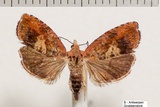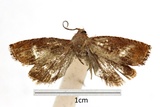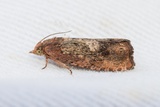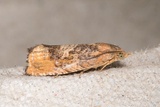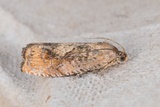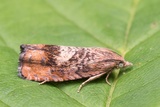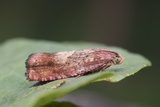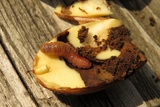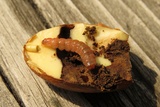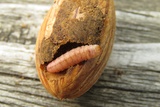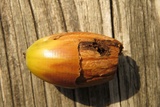Cydia amplana (Hübner, [1799]) Species
Last modified: Nov. 24, 2025, 7:47 p.m.
A common species in the northern part of Belgium, elsewhere uncommon.
Details
- Classification
- Family: Tortricidae > Subfamily: Olethreutinae > Tribus: Grapholitini > Genus: Cydia > Species: Cydia amplana
- Vernacular names
- Oranje eikenbladroller (NL), Rusty Acorn Piercer (EN), Kastanienwickler (DE)
- First mention in Belgium
- Janmoulle E. 1959a. Espèces nouvelles pour la faune belge (suite). — Lambillionea 59: 2, 21–22, 69–70. On page 21.
- Status
-
Native
First observation for Belgium in 1958 at Torgny (LX), leg. E. De Laever.
Distribution
Cocoon/pupa
Ocher yellow with light brown shades.
Bionomics
The larva lives in the fruits or seeds (acorns, nuts) of the host plant. When full grown, it leaves its feeding place. Hibernates as a larva in a cocoon in the soil. Pupation next spring or summer. It often takes two years to develop.
Infected acorns show little evidence of the larval presence but are more 'squeezable' than normal ones, due to the activities of the larva which fills the created cavities inside the acorn with soft frass. Pupation in a cocoon in the soil.
Adults come to light.
Flight periods
The adults fly in one generation a year, usually from mid-June to mid-September. Some individuals may be observed till mid-October. Most observations during August.
Habitat
It inhabits gardens, parks, woods, waysides or places with free-standing oak trees.
